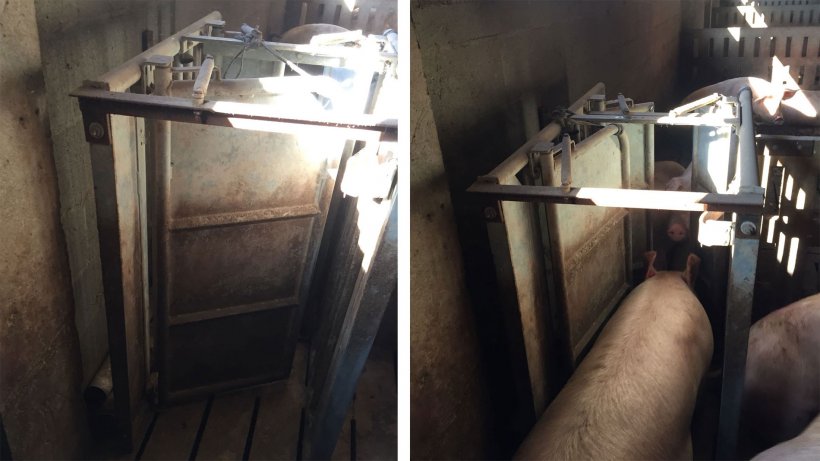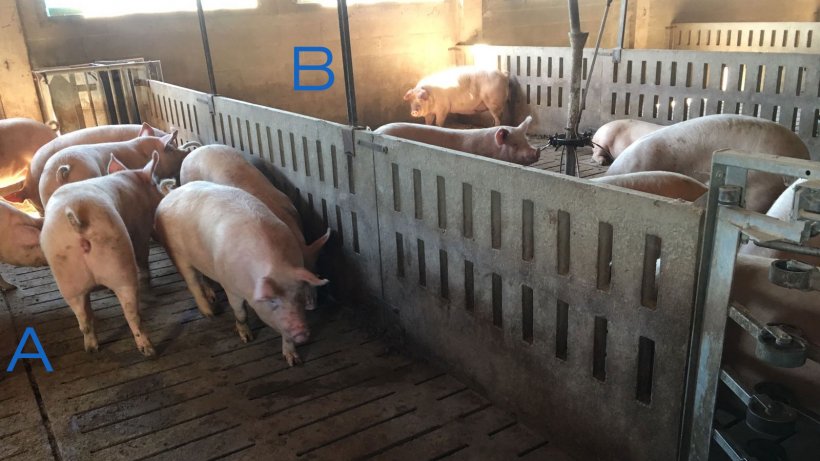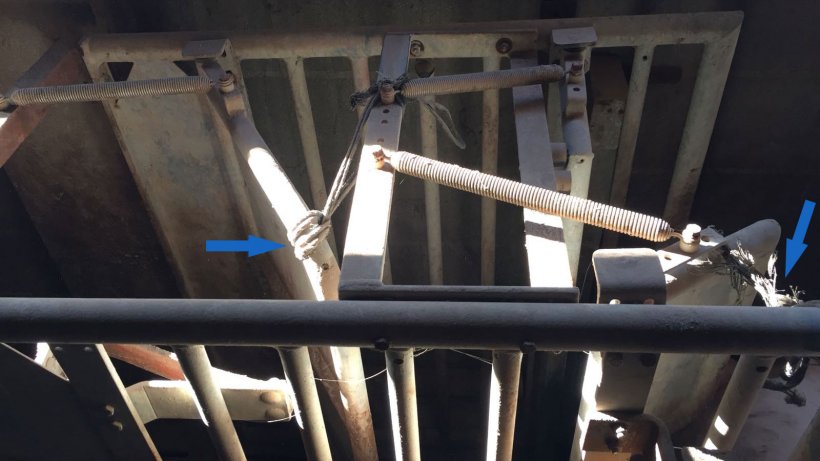On the farms that use ESF machines, it is very important that gilts overcome their fear to the stations and that they learn all their functioning before they go to the service and the gestation areas, where they are group-housed. It is not a good thing that pregnant sows become stressed because of not being able to reach their feed, that stress adding to the fact that they have been mixed with other animals, etc.
Gilts that have had a good training with the ESF stations are able to remember how the mechanisms work once they are introduced in the sow group-housing pens when their pregnancy has been confirmed.

It is also important that the training is carried out by the animals themselves, and that practically 100% of the gilts learn to go through the machines with the minimum work having to be carried out by the staff.
The most difficult thing for the sows to learn is to open the doors, especially if they are solid and they cannot see what is on the other side. The facts that they are curious animals and that feed is always a positive stimulus are extremely helpful.
On our farm we work with ESF stations with a door with horizontal bars at the entrance, and with two solid doors at the exit, the first one with a single and the second one with a double leaf door (Photo 1).

Photo 1. Feeding station exit doors.
What we did in the area where we receive the gilts is to connect two pens and make two openings. In one of the openings we placed the first door with horizontal bars, and in the opening at the back we placed the framework of the ESF station with its two solid exit doors (Photo 2). A complete feeding station could be placed, but what the animals must learn is to open the doors to reach their feed.

Photo 2. Pen for training the gilts to enter and exit the feeding station. Side A only has drinkers, and the feeding troughs are in area B. To encourage the sows to go from one side to the other, the feed is placed in one side (B), and in side A there is only water.
They learn to open the door with the horizontal bars easily (video). To make it easier for them to open the solid doors, during the first stages the doors are tied so they are slightly open (Photo 3). The facts that the doors remain slightly open and that the animals can see what there is at the other side, are also helpful if during the first times some sows become nervous.

Photo 3. At the beginning of the training, the solid doors are left slightly open.
The sows are housed in these pens when they are some 7.5 months old.
To ensure that all the sows know how to open the solid doors, all the sows are housed in area A (where there are only drinkers), and the "easy" door with the horizontal bars is blocked. To reach the feed, the sows must go to area B through the solid doors. The staff only take them to area A and controls that no sows remain in this area. In 4-5 days all the sows learn to go through the doors. Some animals imitate others, and if any sow remains in area A the staff helps it to reach the other area.
After those 4-5 days, the solid doors are untied so they work as in the feeding station, and the door with the bars is unblocked. During the following 10 days the animals reinforce what they have learnt.
Once 15 days have gone by in this pen, and when the gilts know how to go from one area to the other without difficulties, they are taken to a pen with a feeding station identical to the one they will find later on. They remain there until they are taken to the stall area, so they become used to them before their insemination.
The only job that the staff must perform is to move the sows to area A during the first 4 days and to verify that none of them is unable to go to the area where the feed is for more than 48 hours. If that happens they will help them. The rest of the job is done by the animals themselves.

The rate of gilts that do not adapt to the electronic feeding system at our farm is below 2% with a minimum handling by the staff.


